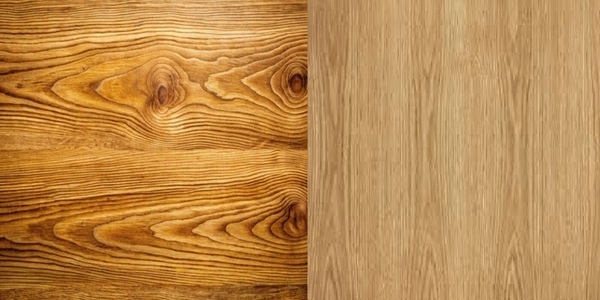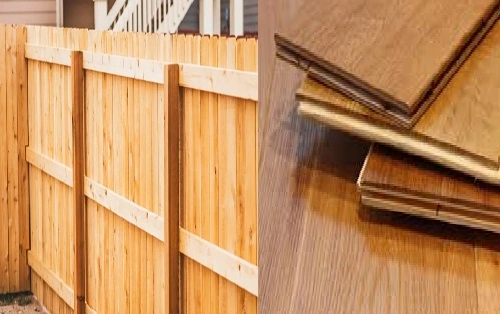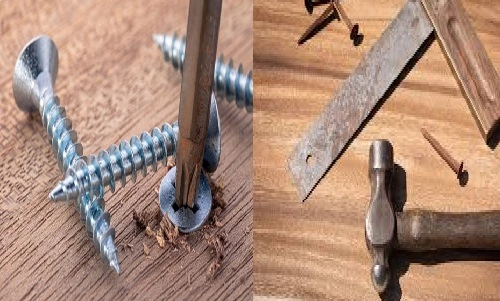When it comes to furniture, flooring, or cabinetry, homeowners often face a critical choice between real wood and laminate. Both materials offer unique advantages and limitations depending on your budget, lifestyle, aesthetic goals, and durability requirements. While real wood provides natural beauty and long-term value, laminate is cost-effective and low maintenance.
In this article, we’ll explore the differences between real wood and laminate in terms of durability, appearance, maintenance, cost, and environmental impact to help you make the best decision for your next home improvement project.
What is Real Wood?
Real wood refers to natural hardwood or softwood materials that are used to construct furniture, flooring, cabinetry, or décor. Hardwoods like oak, maple, walnut, and cherry are prized for their strength, durability, and beauty, while softwoods like pine are often more affordable and lightweight.
Real wood comes in two main forms:
- Solid Wood: Furniture or flooring crafted entirely from a single piece of wood.
- Veneer: A thin layer of real wood applied over a core material like plywood or MDF to reduce costs while retaining a natural appearance.
What is Laminate?
Laminate is a synthetic material composed of multiple layers: a core layer (often made from compressed fiberboard), a decorative printed layer that mimics wood or other surfaces, and a clear protective top layer. Laminate is commonly used for flooring, furniture, and cabinetry due to its affordability and ease of maintenance.
Real Wood vs. Laminate: Key Comparisons
| Feature | Real Wood | Laminate |
|---|---|---|
| Appearance | Natural, unique grain patterns | Printed image mimics wood but uniform |
| Durability | Long-lasting; can be refinished | Scratch-resistant but less durable long-term |
| Maintenance | Requires regular care and refinishing | Low maintenance; easy to clean |
| Cost | Expensive, especially hardwood | Affordable and budget-friendly |
| Lifespan | 50+ years with care | 10–20 years, depending on quality |
| Customizability | Can be sanded, stained, or refinished | Limited customization |
| Water Resistance | Prone to warping if exposed to moisture | Better moisture resistance but not waterproof |
| Environmental Impact | Renewable but depends on sourcing | Less eco-friendly; not biodegradable |
1. Appearance and Aesthetic Appeal
- Real Wood: Real wood’s natural beauty is unmatched. Each piece of wood features unique grain patterns, knots, and color variations that add warmth, character, and authenticity to any space. Solid wood furniture and flooring can be stained or painted to match your décor and, if scratched, sanded and refinished to restore its original look.
- Laminate: Laminate uses high-resolution printed images to mimic the look of real wood. Modern laminate technology has improved significantly, offering realistic designs that imitate natural wood grain. However, laminate lacks the depth, texture, and individuality of real wood, and it can look artificial up close.
Winner: Real Wood
For natural, timeless beauty and unique character, real wood is the superior choice.
2. Durability and Longevity
- Real Wood: Real wood is highly durable and can last for decades, even centuries, with proper care. Hardwoods like oak, maple, and walnut are particularly strong and resistant to wear and tear. Scratches, dents, and surface damage can be repaired by sanding and refinishing, extending the lifespan of real wood furniture or flooring.
- Laminate: Laminate is designed to be scratch-resistant and stain-resistant, making it an excellent choice for high-traffic areas or homes with kids and pets. However, laminate does not age well—once the top protective layer is worn or damaged, it cannot be refinished. Over time, the surface can peel, chip, or warp, especially in areas exposed to moisture.
Winner: Real Wood
While laminate holds up well to light wear and tear, real wood outlasts laminate in terms of overall longevity and repairability.
3. Maintenance
- Real Wood: Real wood requires regular care to maintain its appearance and integrity. This includes periodic cleaning with wood-safe products, polishing, and resealing or refinishing every few years to protect against wear and moisture damage. Improper care can lead to warping, scratches, or fading.
- Laminate: Laminate is low maintenance and easy to clean. A simple wipe with a damp cloth and mild cleaner is sufficient for daily upkeep. Laminate is resistant to stains and scratches, making it ideal for busy households. However, it’s not waterproof, so spills should still be cleaned promptly to prevent swelling in the core layer.
Winner: Laminate
For busy homeowners who prefer a low-maintenance option, laminate is the clear winner.
4. Cost
- Real Wood: Real wood is more expensive due to the cost of natural materials and craftsmanship. Premium hardwood furniture and flooring are seen as long-term investments, as they increase a home’s value and can last generations with care.
- Laminate: Laminate is significantly more affordable. It’s a cost-effective solution for homeowners who want the look of wood without the high price tag.
Winner: Laminate
If you’re on a tight budget, laminate provides a wood-like appearance for a fraction of the cost.
5. Water Resistance
- Real Wood: Real wood is not water-resistant and can warp, swell, or rot when exposed to excessive moisture. Proper sealing and immediate cleanup of spills are necessary to protect wood surfaces.
- Laminate: Laminate has better moisture resistance due to its protective top layer. While it can handle occasional spills, standing water or prolonged exposure can cause the core to swell and damage the laminate.
Winner: Laminate
For kitchens, bathrooms, or basements where moisture is a concern, laminate is the safer choice.
6. Environmental Impact
- Real Wood: Real wood is a renewable resource when responsibly sourced. Look for FSC-certified wood to ensure it comes from sustainable forests. However, harvesting wood irresponsibly can lead to deforestation and environmental harm.
- Laminate: Laminate is made from synthetic materials and is not biodegradable. It’s difficult to recycle, and its production process involves chemicals that may have environmental impacts.
Winner: Real Wood
Sustainably sourced wood is the more eco-friendly option.
Which Should You Choose?
- Choose Real Wood If:
- You value natural beauty, character, and long-term durability.
- You want furniture or flooring that can be refinished and repaired.
- You’re looking for an investment that adds value to your home.
- Choose Laminate If:
- You’re on a budget and need a cost-effective solution.
- You want a low-maintenance surface for a busy household.
- You need better moisture resistance for kitchens, bathrooms, or basements.
Final Thoughts
Both real wood and laminate have their advantages, and the right choice depends on your budget, lifestyle, and aesthetic goals. Real wood stands out for its durability, beauty, and long-term value, while laminate offers affordability, low maintenance, and a practical solution for modern homes.
For high-traffic or moisture-prone areas, laminate may be the ideal option. However, if you want timeless quality and a natural touch, real wood remains unmatched. By weighing your needs and understanding the strengths of each material, you can make an informed decision that enhances your home’s beauty and functionality for years to come.


